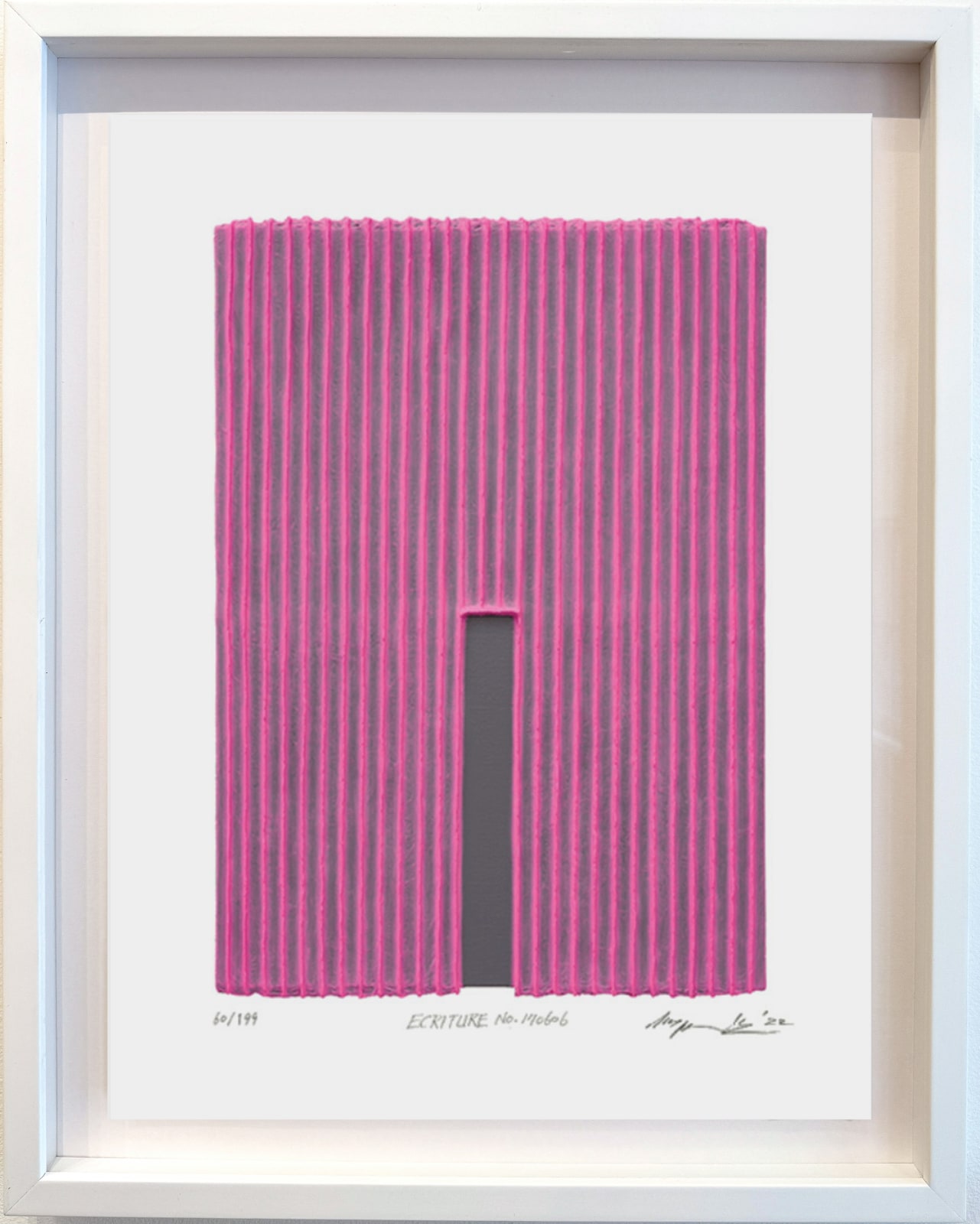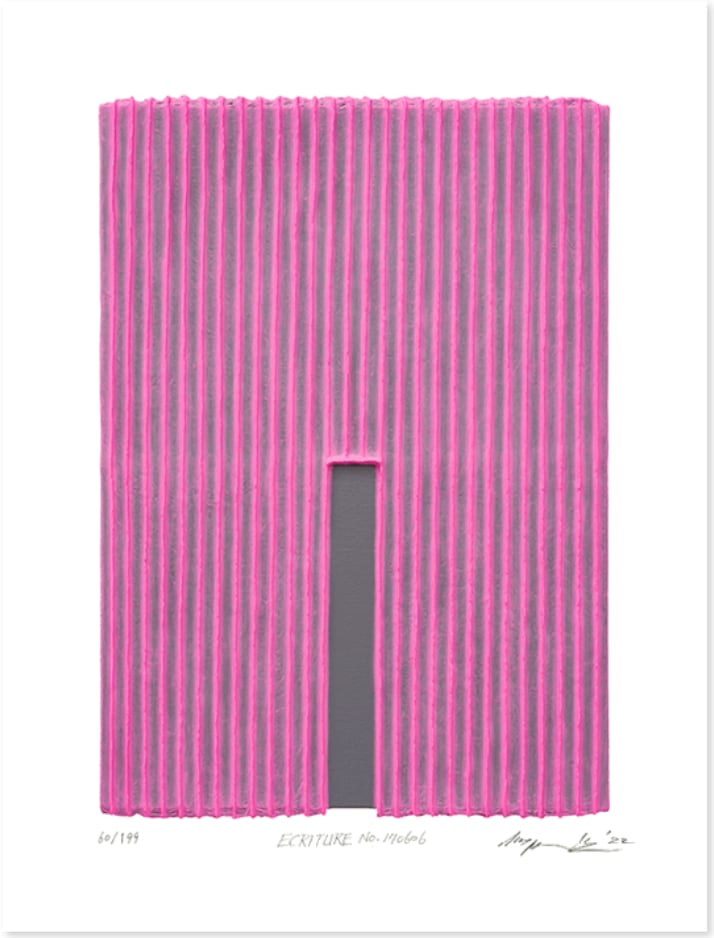



Park Seo-Bo
ECRITURE No.170606, 2022
Matiere
17 7/10 × 13 2/5 in
45 × 34 cm
45 × 34 cm
Edition of 199
Copyright Upsilon Gallery
Further images
Hand-signed by artist, Front Park Seo-Bo, a leader of the Dansaekhwa movement, often referred to as Korean Minimalism, played a pivotal role in shaping Korean modernism. His art bridges the...
Hand-signed by artist, Front
Park Seo-Bo, a leader of the Dansaekhwa movement, often referred to as Korean Minimalism, played a pivotal role in shaping Korean modernism. His art bridges the meditative practice of calligraphy and the radical purity of contemporary Minimalism, producing a dialogue between East and West. This work is part of the artist’s Ecriture series and features the artist’s characteristic use of repetitive pattern, meditative process, Minimalist aesthetic, and sublime serenity. Developed in 1967, the Ecriture series involves manipulating a still wet surface with carving gestures that evoke the act and flow of writing script. However, beginning in the 1980s, Park began using Hanji paper, a material handmade from mulberry bark with a rich history in Korea. Not only emblematic of the work's cultural origins, the medium allowed Park to create rhythmically composed, multi-dimensional works that align with the Dansaekhwa movement’s emphasis on the physical nature of material and artwork. The artist’s process involves layering and scraping the pulp on the wet surface to create sculptural lines, texture, and relief-like surfaces. In the early 2000s, Park introduced vibrant colors in his works, inspired by the grandeur of nature. His Écriture series encapsulates his pursuit of unity between self, material, and the natural world. Executed in a single sitting with complete focus, this work stands as a silent yet dynamic record of lived time—of breath, movement, and presence.
In ECRITURE No.170606, a gray void in the center of the lower register anchors the composition, a quiet recess within the surrounding space. Fuschia and gray lines radiate outward in a rhythmic pattern, creating a sense of depth and movement. The raw edge of the paper remains visible, grounding the piece in its materiality and emphasizing the artist’s hand. The interplay between structure and openness invites contemplation of absence and fluidity.
Park Seo-Bo, a leader of the Dansaekhwa movement, often referred to as Korean Minimalism, played a pivotal role in shaping Korean modernism. His art bridges the meditative practice of calligraphy and the radical purity of contemporary Minimalism, producing a dialogue between East and West. This work is part of the artist’s Ecriture series and features the artist’s characteristic use of repetitive pattern, meditative process, Minimalist aesthetic, and sublime serenity. Developed in 1967, the Ecriture series involves manipulating a still wet surface with carving gestures that evoke the act and flow of writing script. However, beginning in the 1980s, Park began using Hanji paper, a material handmade from mulberry bark with a rich history in Korea. Not only emblematic of the work's cultural origins, the medium allowed Park to create rhythmically composed, multi-dimensional works that align with the Dansaekhwa movement’s emphasis on the physical nature of material and artwork. The artist’s process involves layering and scraping the pulp on the wet surface to create sculptural lines, texture, and relief-like surfaces. In the early 2000s, Park introduced vibrant colors in his works, inspired by the grandeur of nature. His Écriture series encapsulates his pursuit of unity between self, material, and the natural world. Executed in a single sitting with complete focus, this work stands as a silent yet dynamic record of lived time—of breath, movement, and presence.
In ECRITURE No.170606, a gray void in the center of the lower register anchors the composition, a quiet recess within the surrounding space. Fuschia and gray lines radiate outward in a rhythmic pattern, creating a sense of depth and movement. The raw edge of the paper remains visible, grounding the piece in its materiality and emphasizing the artist’s hand. The interplay between structure and openness invites contemplation of absence and fluidity.
1
of
16



